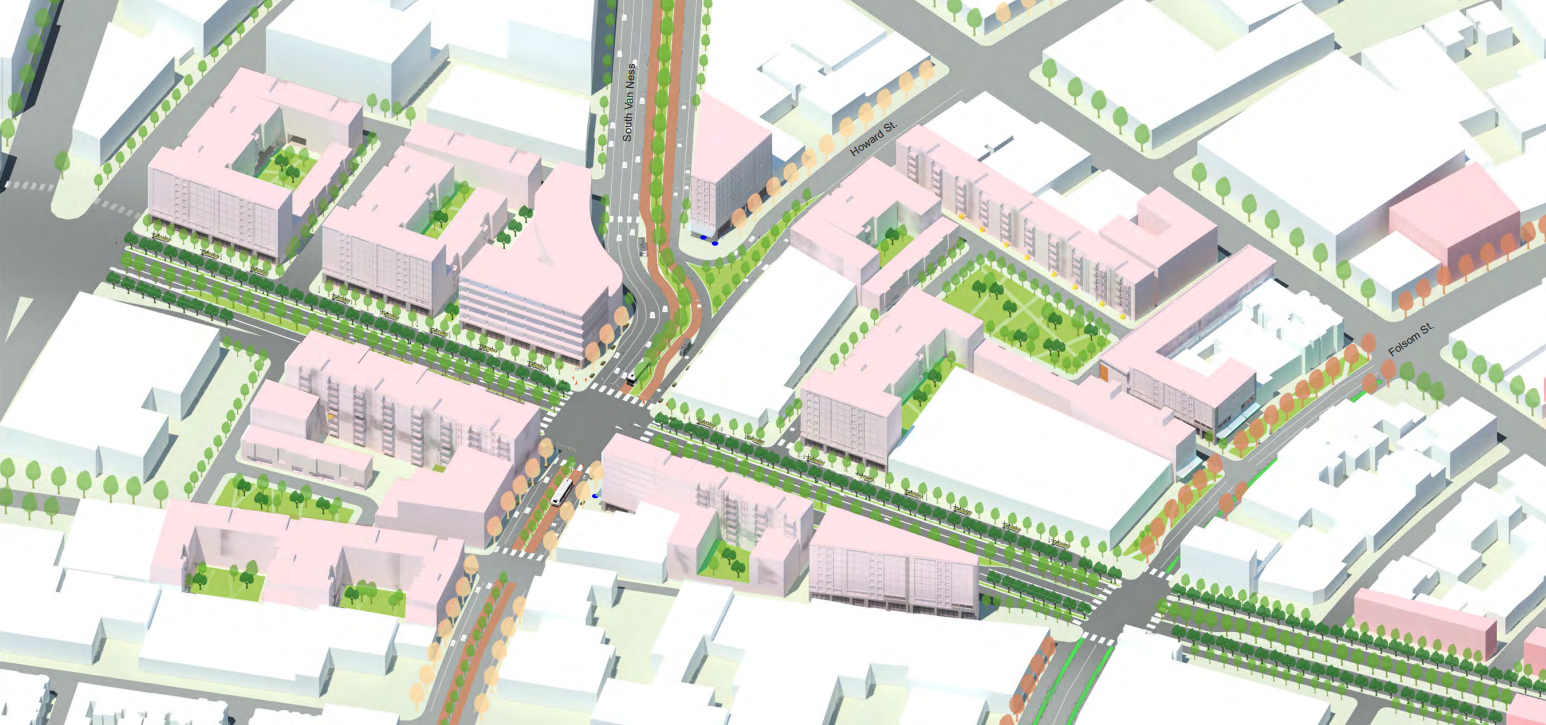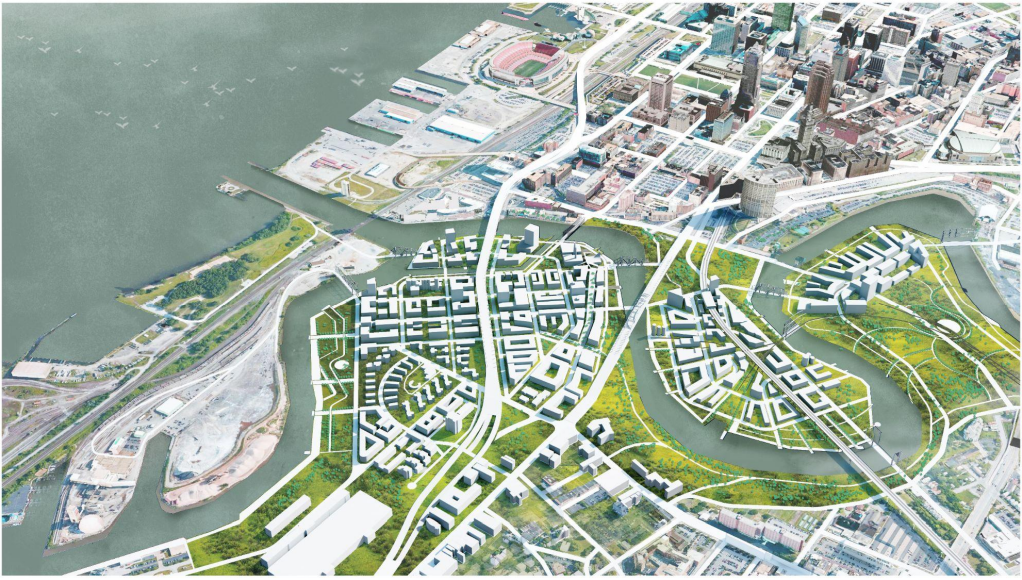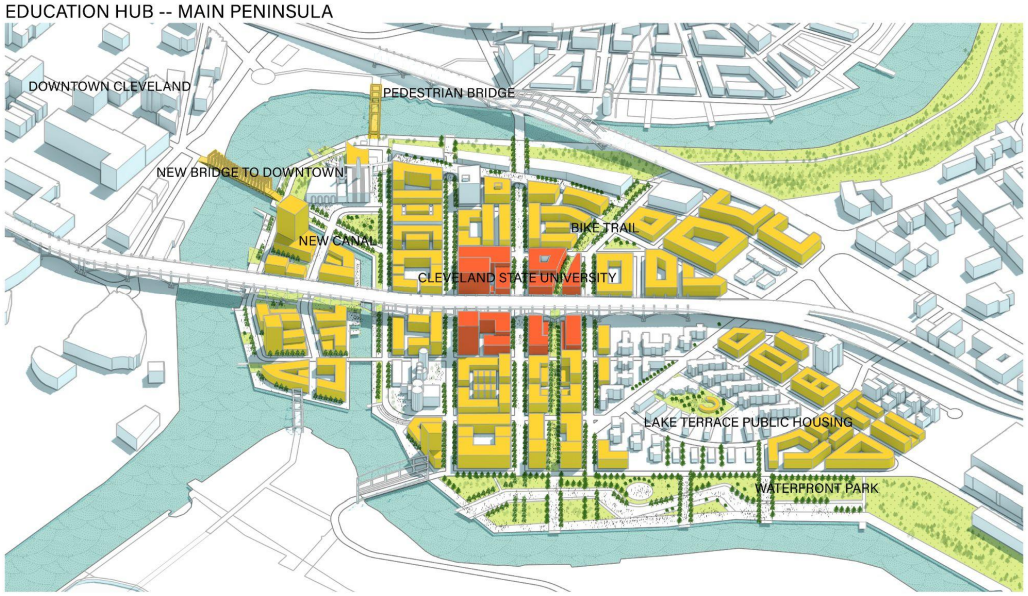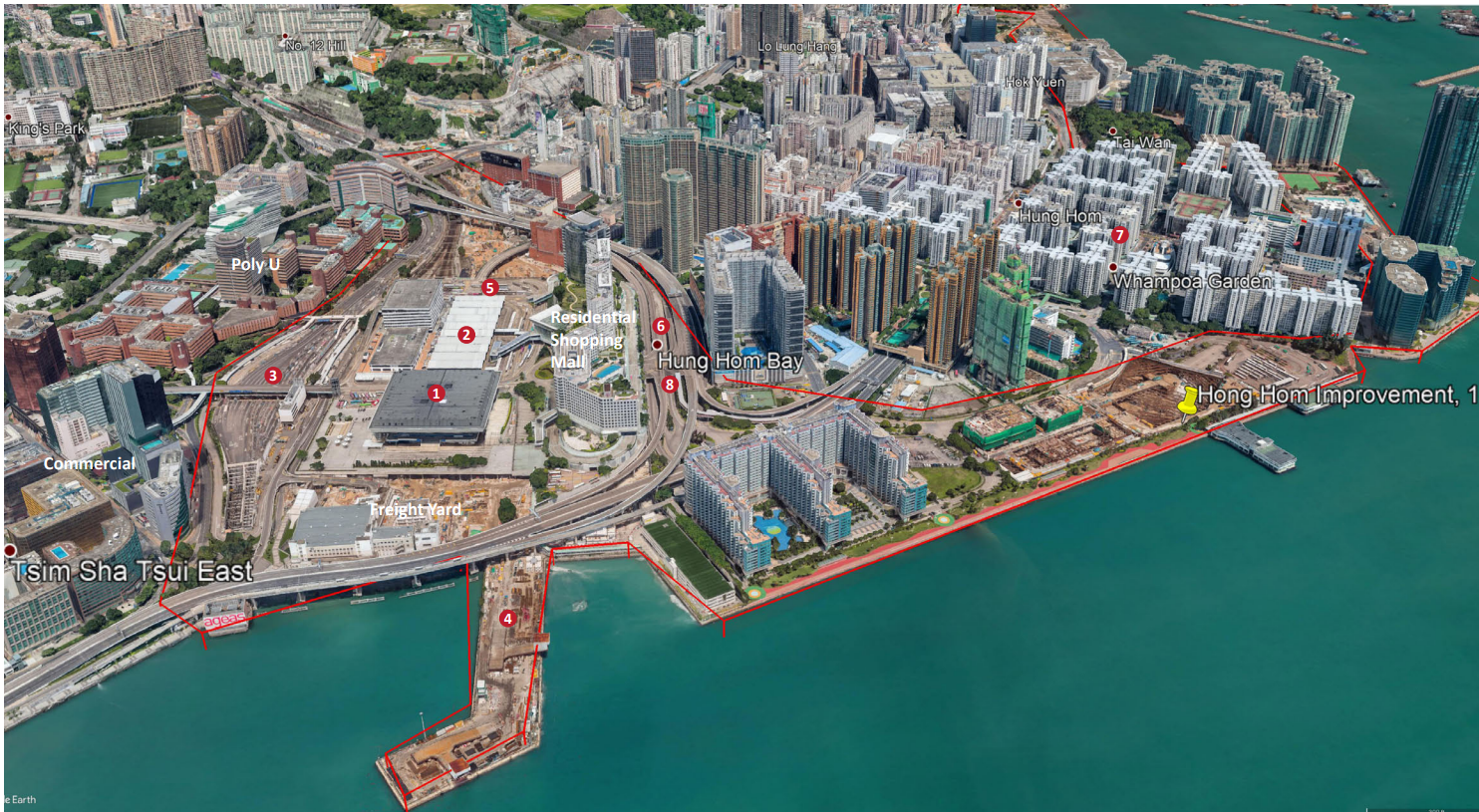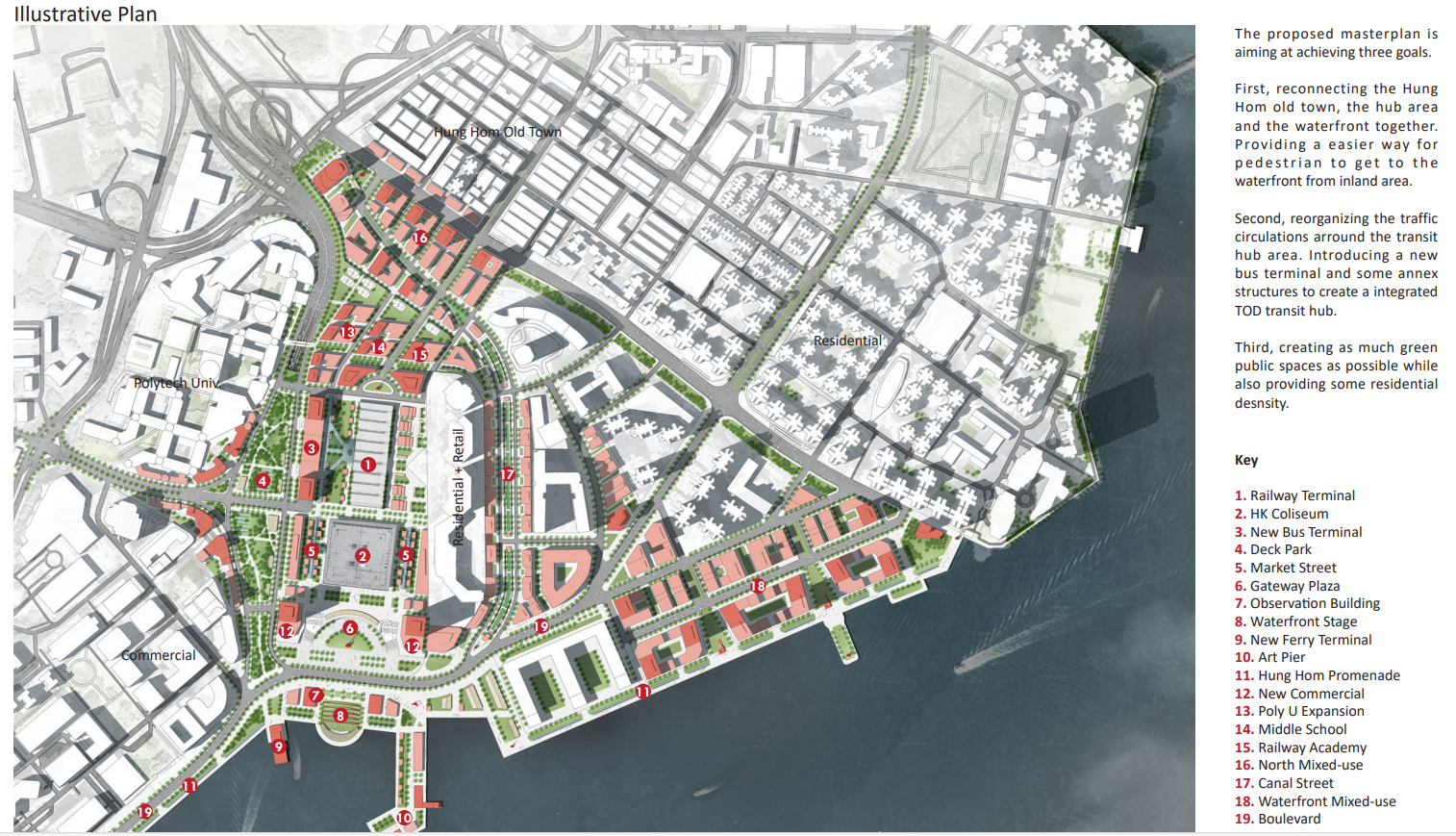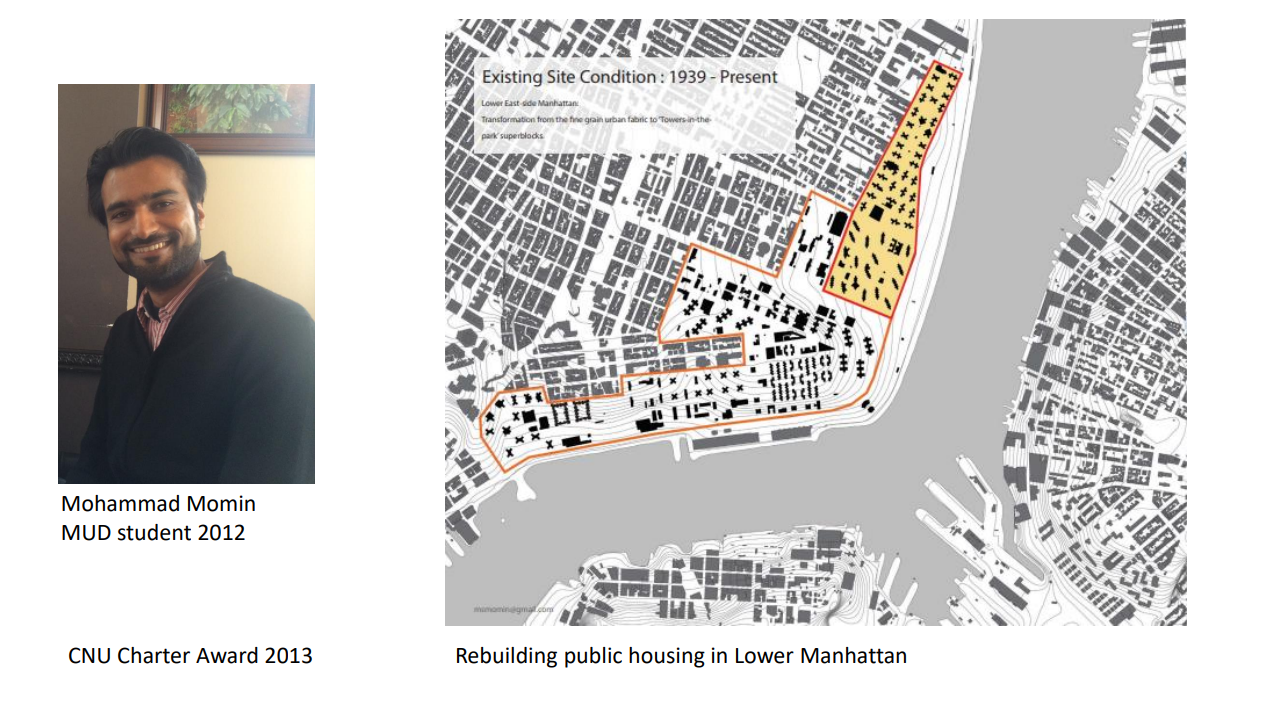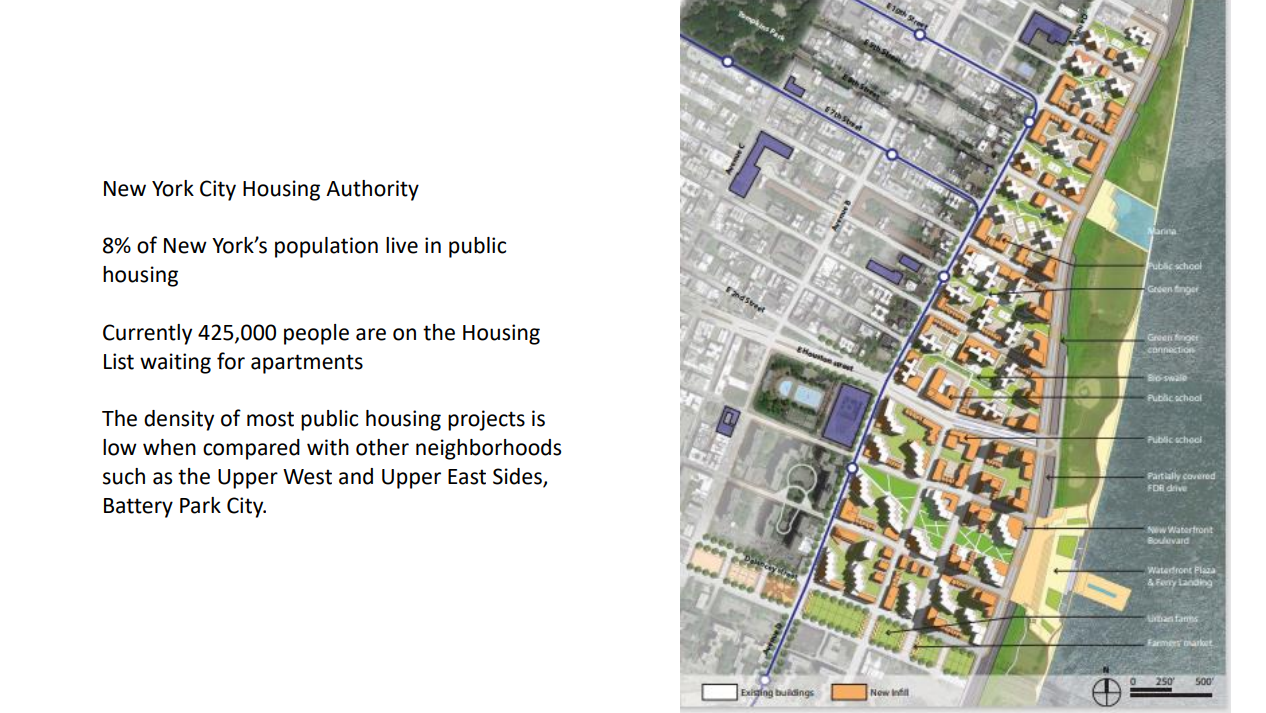UC Berkeley Master of Urban Design student thesis work.
John Ellis Thesis Instructor with Harrison Fraker, Stefan Pellegrini, Chris Calott and others.
The UC Berkeley Master of Urban Design program requires the students to prepare an urban design thesis as part of their studies. Some of the best work has focused on specific sites rather than overly ambitious design proposals that attempt to address too broad a topic. This has enabled the students to create detailed urban design proposals that address circumstances related to a particular place.
Examples shown here include Qingchun Li’s proposal to extend San Francisco’s Octavia Boulevard south of Market Street; Wenjie Wu’s proposals for revitalizing downtown Cleveland Ohio along the Cuyahoga River; Chang Xu’s plans for transforming the Kowloon transit center and adjoining areas in Hong Kong; and Mohammad Momin’s thesis to demonstrate how one of New York’s Robert Moses era housing estates could be rebuilt and densified to create several thousand more housing units by using existing planning codes.
Qingchun Li's thesis proposed to replace the remnant of the former Central Freeway in San Francisco with a continuation of Octavia Boulevard south of Market Street to a new entry to the city with Highway 101.
Her design proposal repaired the fractured urban fabric and demonstrated the possibility of accommodating up to 3,000 new dwellings. A new rond-point at the intersection with US 101 would create a dramatic new entry to the City for travellers coming in from the south. Qingchun Li's design won a CNU Student Award in 2018.
Detail of the proposed boulevard intersection with Mission Street showing new infill housing and public squares.
Detail of the new rond-point with Highway 101 and the precedent at Canary Wharf London.
Wenjie Wu thesis for revitalizing the Cuyahoga River in downtown Cleveland.
The legacy of pollution and toxic degradation along the Cuyahoga river.
Wenjie Wu's thesis proposed to transform derelict brownfield sites along the banks of the Cuyahoga River into a set of new neighborhoods. The urban design took advantage of the multiple bridges that crisscross the river reestablishing linkages with Downtown Cleveland and the adjacent neighborhoods.
The plan proposed an extension of an existing riverfront park to create a linear network of open spaces linking the different neighborhoods.
Overview showing the relationship of the sites along the Cuyahoga River with Downtown Cleveland.
The Main Peninsula is designated as a site for a new Education Hub with an extension to Cleveland State University.
The Columbus Peninsula could become the site for a 2030 Sustainable Urbanism Expo.
The Scranton Peninsula could be the site for an expansion of the Cleveland Health Campus.
Chang Xu's thesis to transform the Kowloon Terminal area in Hong Kong.
Chang Xu's thesis proposed to transform the area around the Kowloon Terminal and Polytechnic and undertake extensive urban repair to the fractured context. His urban design plan demonstrated the possibility of creating several thousand new dwellings on a small block pattern with a variety of building types in contrast to the relentless monotony of the current situation.
Chang's plan would replace a tangle of motorways with new waterfront development and create a new elevated park around the existing terminal and entry to the road tunnels linking Kowloon with Hong Kong.
The existing site with a tangle of motorways, huge transit structures, isolated districts, and fractured urbanism.
The proposed redesign of the district integrating the current buildings into a new urban form by creating a new ground plane with a park above the tunnel mouth.
The new park above the tunnel mouth to the motorway linking Kowloon with Hong Kong.
The transformation of the waterfront into a pedestrian esplanade and pier.
Mohammad Momin's thesis to rebuild and densify one of Manhattan's public housing districts.
Mohammad was able to demonstrate how one of the Robert Moses era housing estates could be transformed into a higher density neighborhood and returning to the original street and block pattern using existing planning codes.



